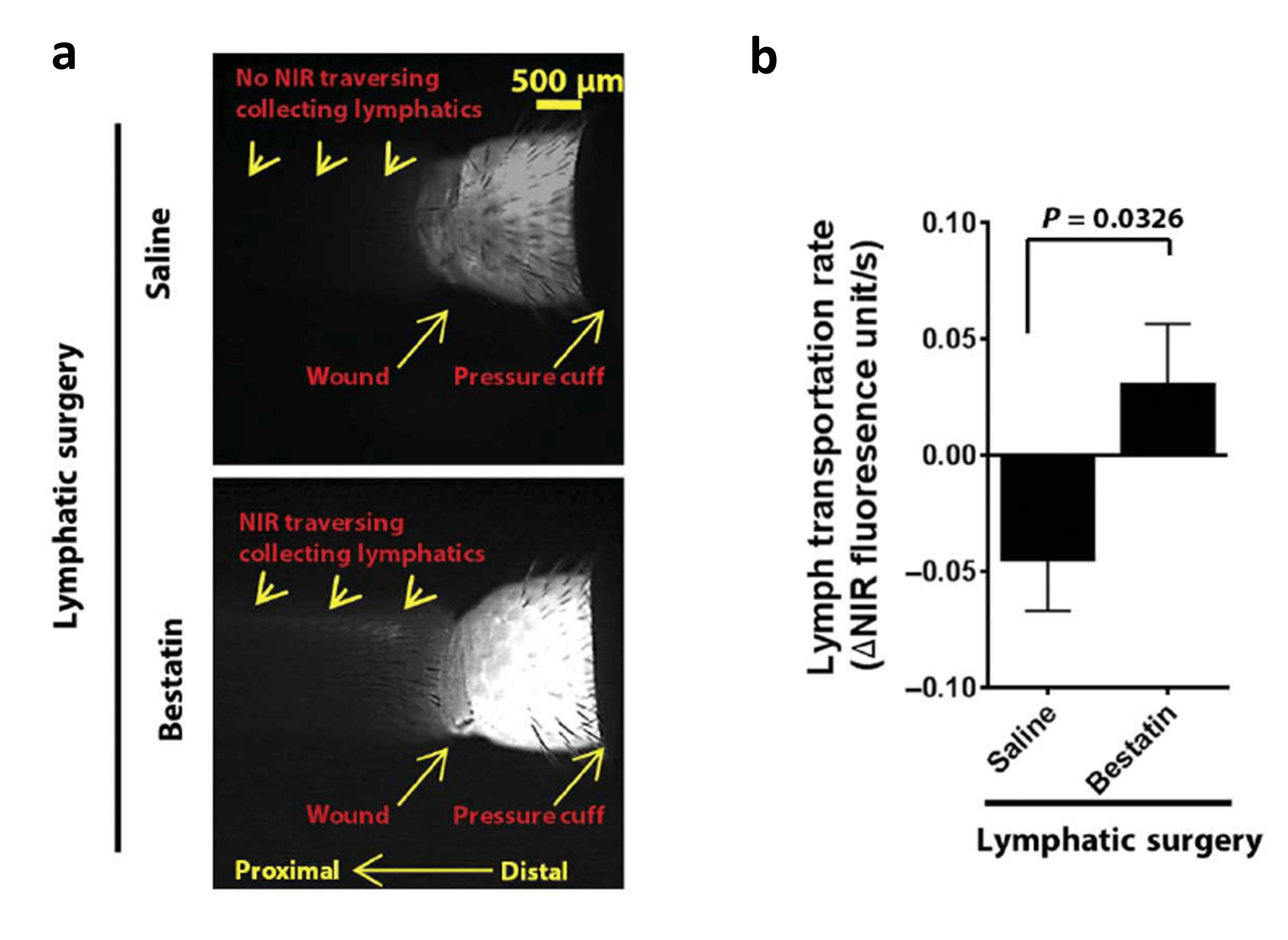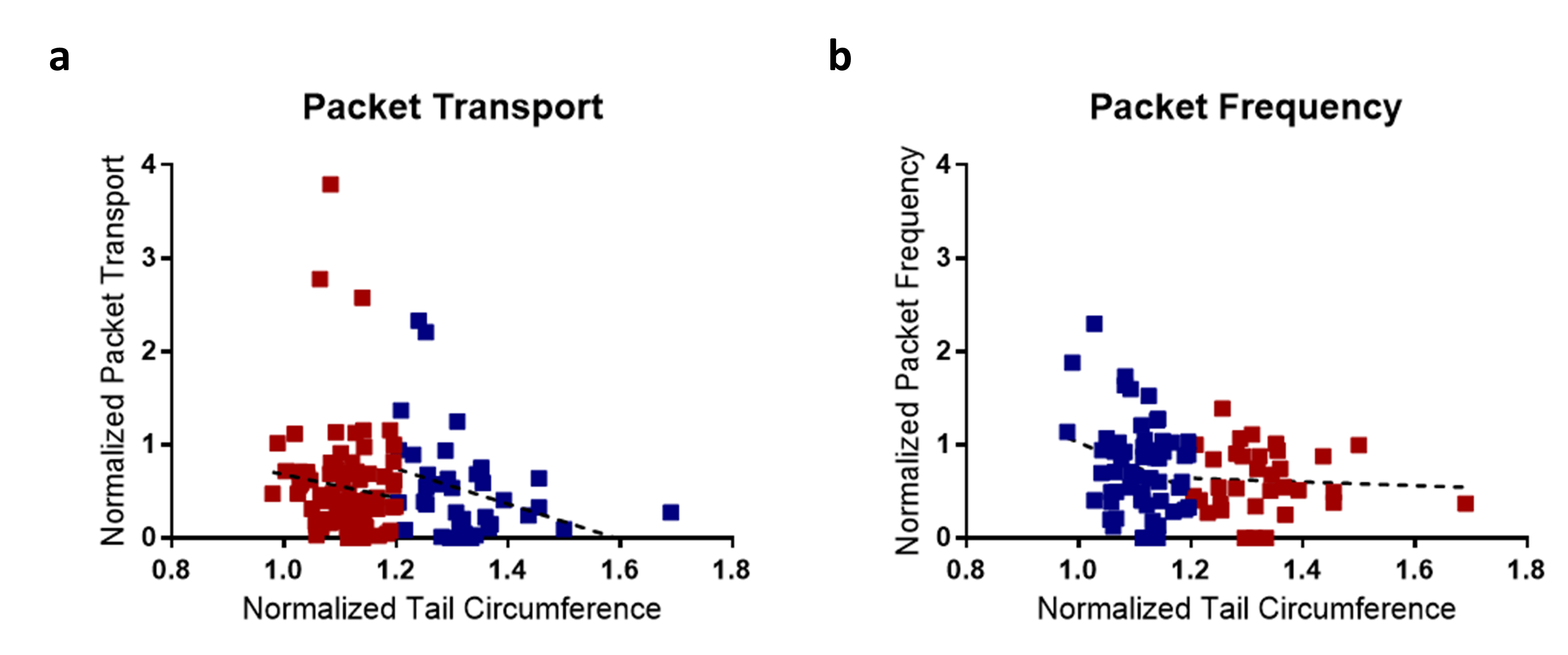PEG Hydrogels to Explore Lymphatic Sprouting Behavior and Regulation
We developed, in collaboration with Dr. Andres Garcia, a platform that utilizes a synthetic polyethylene glycol (PEG) hydrogel to induce regrowth of embedded lymphatic tissue. These PEG hydrogels can be fabricated to selectively change a single property, allowing us to examine how each ECM properties (such as stiffness or degradability) influence lymphatic behavior. Segments of lymphatic collecting vessels were cultured within polyethylene glycol hydrogels fabricated in a manner to allow for independent tuning of gel properties. After culture for a week, tissue within the gels can be analyzed for sprouting complexity and phenotype.

Contact: Josh Hooks
Involvement of Leukotrine B4 on Lymphatic Vessel Failure
The objective of this study is to determine if leukotriene B4 (LTB4) drives lymphatic collecting vessel failure and to identify the direct mechanism of action for LTB4 on lymphatic collecting vessels.
- In a collaboration with Dr. Stanley Rockson and Dr. Mark Nicolls at Stanford University, we showed that antagonizing LTB4 production using a drug called bestatin beginning three days after surgery in a mouse tail lymphedema model reduced swelling and ameliorated the histological hallmarks (fibrosis and dermal thickening) of the disease (Tian et al., Sci Trans Med, 2017).

- Our work also showed that lymphatic function as measured by near-infrared (NIR) imaging improved in mice treated with bestatin after surgery (Fig. 1). To better measure changes in lymphatic collecting vessel function during lymphedema progression, our lab has developed a single vessel ligation mouse tail lymphedema model where all the initial lymphatics and one collecting vessel are cauterized, leaving the other collecting vessel as the only route available for lymph transport. The swelling response to this surgery is variable, so we were interested in determining how the functional response of the intact vessel was dependent on extent of swelling. We found that packet transport had a negative correlation with swelling diameter only in mice that swelled greater than 20%, while packet frequency had a negative correlation with swelling diameter only in mice that swelled less than 20%. These results show that swelling severity has a significant effect on lymphatic function and changes in packet frequency do not necessarily reflect changes in overall lymphatic transport capacity. Future work will analyze how LTB4 drives lymphatic failure, through both direct and macrophage-dependent mechanisms.

Contact: Matthew Cribb